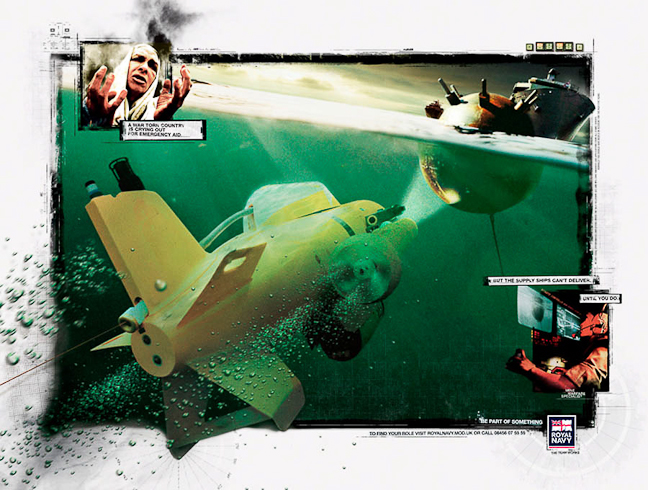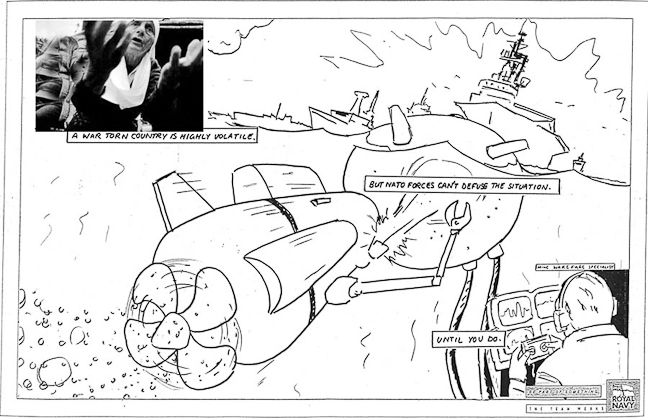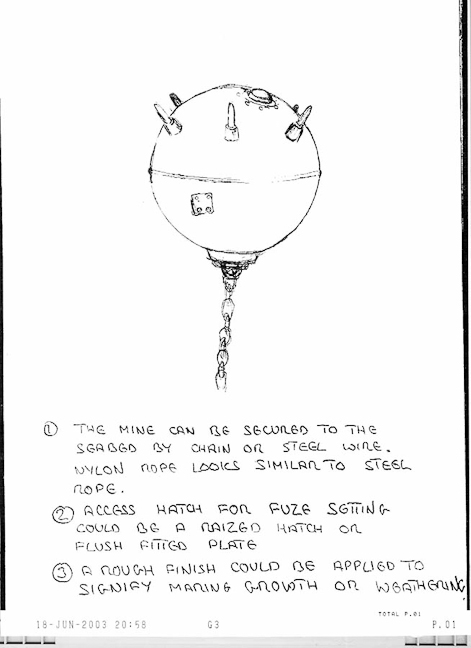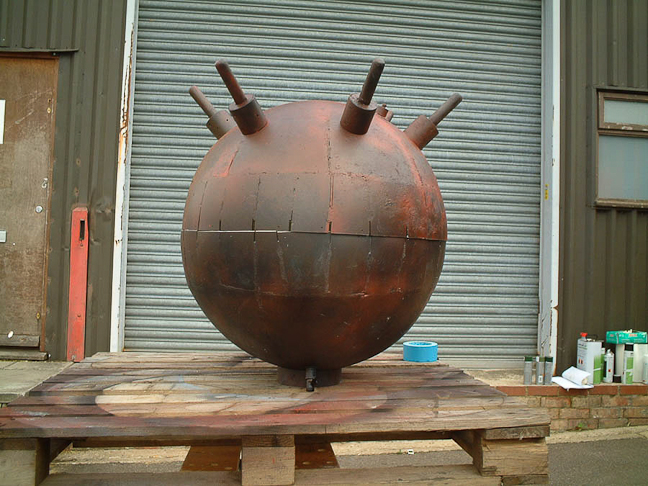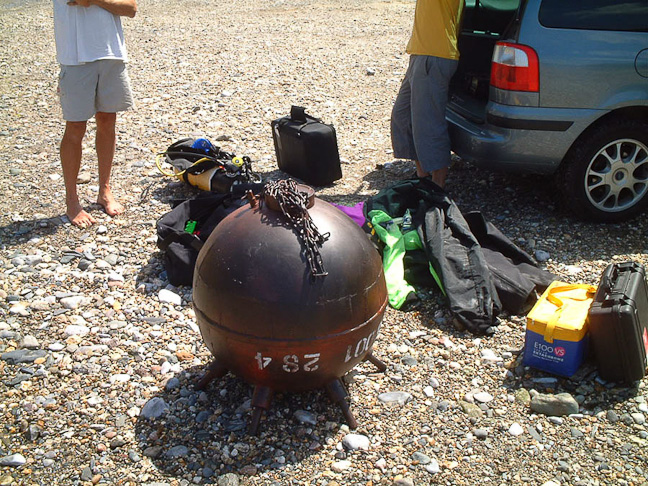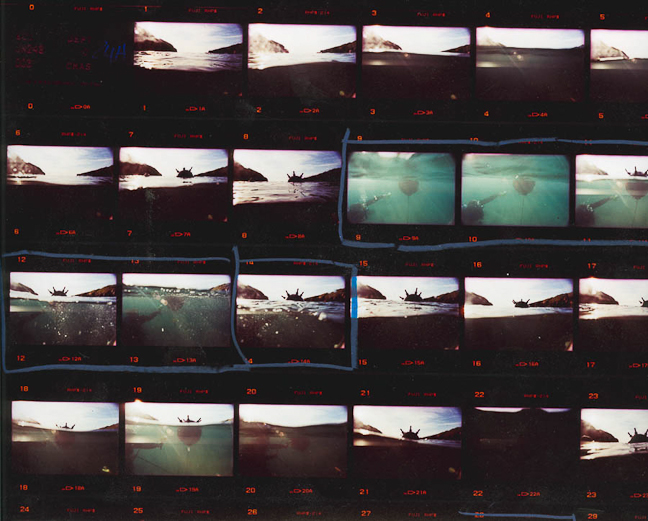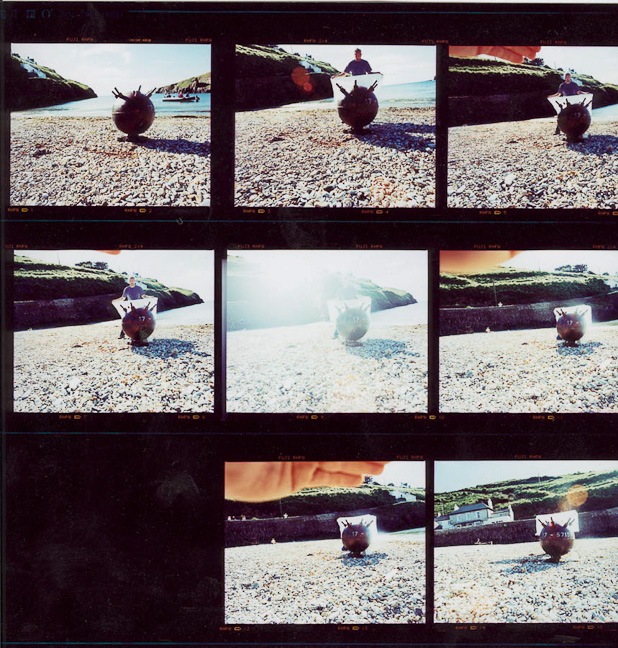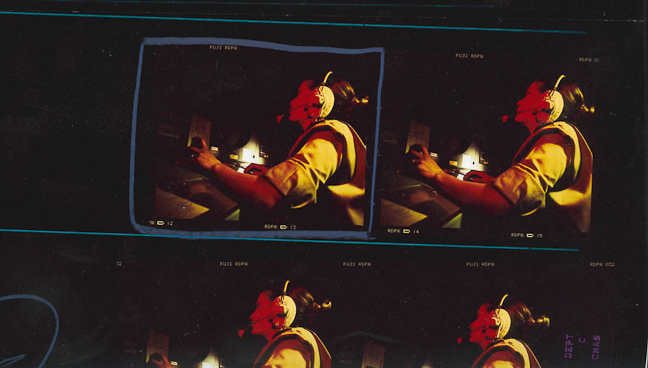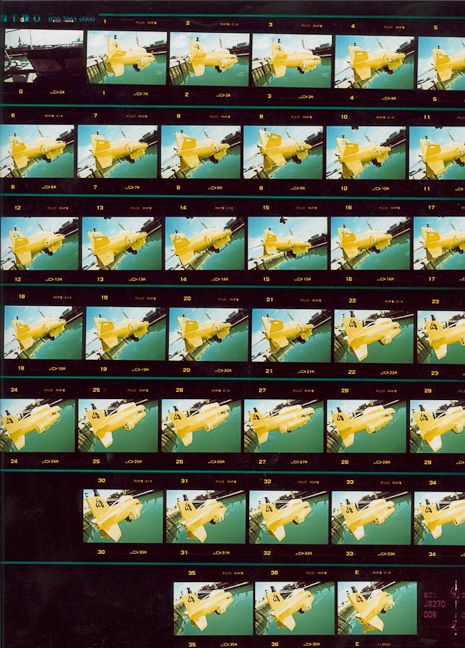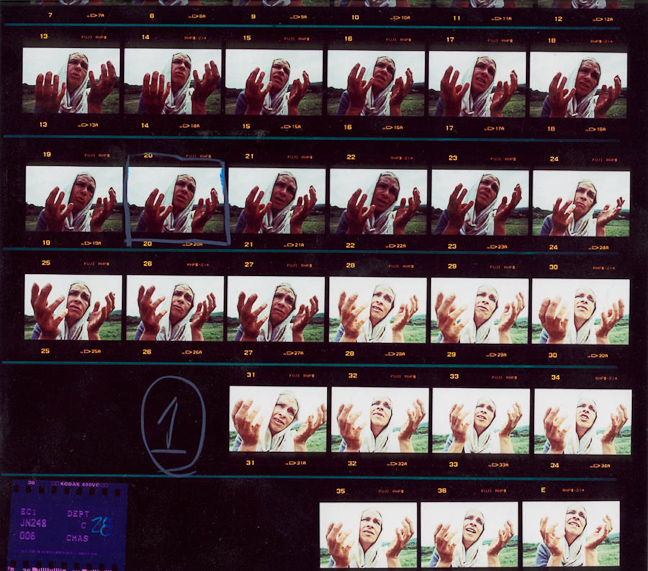Navy Submarine shoot, how we did it
As I mentioned in the introduction to this post a short while ago, “What do you do?” my commission to shoot Royal Navy recruitment advertisements for Y&R Rainey Kelly was far and away the most complicated shoot I have ever done. There were 6 print ads that we shot all over the UK starting on the Isle of Skye in Scotland and including the beaches of Cornwall, the bridge of the aircraft carrier HMS Ark Royal in Portsmouth and finishing on the canals of Camden in London. In this post I am going to show how we took the ‘Navy Sub’ from a line drawing to a finished ad.
On paper the ideas were overwhelming. 6 print ads that would appear in mens magazines over several months. Each advertisement included multiple scenarios representing real life situations that you might find working for the Royal Navy.
My direct contact was Jason Stewart, an art director who I had worked with alongside Nick Geourgiou when I assisted on some Land Rover ads in Iceland in 2001. We had a shared interest in fantasy films and science fiction and that coupled with the fact that I had worked closely with Nick in a difficult location on re-working the land rover ads as multiple composite images had encouraged Jason to use me for this shoot. Jasons layouts were full of drama because they showed several scenarios happening at the same time. There were stories within stories and images that had events stretching into the horizon in real world situations that were moments right at the peak of the action. I was impressed by the style of the drawings and later on Jason explained that he had redrawn each one several times which explained why they were such strong layouts. He had also imagined them as a form of heightened reality that, to me, appealed to young men who played computer games. The visual language had its own logic that spoke to the ‘target’ audience. My role as an advertising photographer is to work closely in the spirit of the idea and to help illustrate this. I was excited to be asked as the realism in the ads appealed to the naturalistic documentary approach that I used in my personal work as well as my technical skills which had been honed working for years in still life photography which demands a very precise technique.
Jason showed me all six layouts in our first meeting. Each one had several elements. There was the main image, which was the peak of the action, some inset images showing the key person working for the navy and the final inset showed people who were in danger. He told me that the London retouching agency Actis were keen to work on it as a showcase for their services so we knew that we had the complicated assembly and retouching available to us. The critical question when you are first greeted with this is weather you can actually do this within budget. The budget could literally have been as high as a hollywood blockbuster but in this case our client was the COI (The Central Office of Information ie the Government) so it was clear that were were going to be making ‘Gone with The Wind’ with , shall we say, the resources of Ealing studios! No matter who the client is there is always the question of how to deliver the most for the least, I consider working to a budget as an important aspect of ‘what I do’ as a photographer.
In this case there was a decent budget, the problem was that the ambitions were almost unlimited so there would have to be compromises.
Before I could estimate anything I spent a weekend planning how it could be shot. I realised that most of the incidental elements on the layouts were quite simple despite the huge complexity involved Jason had designed the ads very, very well. For example in the Sub layout the inset shots were a woman looking at a screen in a control room and another woman in a war torn situation whose only background element was a plume of smoke. In the main image the surface of the water was calm and the ship in the distance was almost incidental. The only way to make these work with limited resources was to shoot several parts of each layout in a day accross multiple locations.
Hold on a minute.. whats the big deal, I hear you say! Well… the important thing to realise with advertising photography is the amount of money involved. A typical shoot will involve several days of preparation before spending an entire day achieving one photograph, just one! This is because this one advertisement will cost potentially millions of pounds to distribute. I hasten to add that at the highest levels of worldwide exposure the costs of hiring thousands of poster sites for a week as well as multiple spreads in magazines and having point of sale printed literature in store can easily cost millions but even on a smaller projects with limited exposure in can be hundreds of thousands of pounds. It does not mean that the photographer will earn millions but they will certainly be well paid to accept this pressure and provide an image that will be memorable and stand out from the rest. Because of these extreme levels of exposure the quality of the image must also stand up to tremendous scrutiny therefore you will want to take your time to achieve perfection. However because we were working for a government agency with a small but not inconsiderable level of exposure, it was still an advertising shoot with the same levels of quality expected but now because of budget Vs ambition, it would turn out, we needed to do several shoots a day with no room for error as each element was important.
After breaking the entire campaign down into a list of shots that were required I decided to write a treatment for each ad. A treatment is more often used in a proposal for a film or television script and it explains key parts of the style and approach to be used. Personally I like to work this way as it helps me have an overview of the work and I can plan every element in detail. For each layout I described the scenes in detail. I felt it was important to have a script to be able to shoot out of sequence so that we could match multiple photographic elements together. For example I would be shooting a real submarine in a dry dock hanging from a crane a week after shooting the mine in the water and two days after shooting the water surface itself. To make this believable you must work with a constant light source in the main image as an anchor point for the lighting in every separate element. In the treatment I described the weather conditions, colouration and position of the sun as well as the mood and atmosphere we were trying to achieve.
“It is a calm day on the surface as a supply ship is approaching but below the water the lighting is murkier, more dramatic with low visibility creating a menacing environment and heightening the tension.”
This detailed planning is not unusual. Every photographer must plan the shoot in detail before they can cost it. Its why we are driven mad when clients decide not to make an ad after the planning (for something complicated or ambitious) is completed.. but that’s a topic for another day!
Fortunately when we reconvened the following week and I presented my plan we were on the same page. Jason was a very experienced art director and he had anticipated a lot of what I presented. This was also important to me because the worst thing any of us can do is embark on a difficult shoot without total trust and a recognition of what could be done for the budget and how were were going to cut corners and make it work without affecting the ideas. It also meant that the budget was realistic and with some excitement and of course some natural trepidation we started work!
The first step was to commission some model making. We were both of the opinion that making the layouts work would have an element misdirection in a similar way to how a magician worked a magic trick. All eyes would be on certain elements and these would need to be the most believable. This is why we decided to make a full sized model of a mine for the shoot and I asked John Lewis to build this.
You can see from Johns notes just how much thought goes into these things. Every step of the shoot needed careful research too before we get to this
The finished mine on the beach in Cornwall
A contact sheet showing the frames shot with an underwater camera:
The entire campaign was shot over 13 days in four segments. The final part was simple special effects details like leaves floating in water or a close up of screens and panels to be inserted in the artwork and the first was a trip to the Isle of Skye. We went there principally to achieve the rough seas that were needed for other ads in the series. From previous experience shooting there I knew we would be able to get variable weather, in this case a bonus(!), with calm lagoons and rough ocean all within a few miles. Part two was a trip to Cornwall to shoot a rooftop in a hurricane which would actually be in a few inches of surf as well as the mine submerged and above the water for the best possible detail.
For part three we went from Cornwall to the Royal Navy Base in Portsmouth where we could shoot in the operations room on the HMS Ark Royal aircraft carrier
as well as on the dry dock where they suspended a submarine from a crane.
The inset shot of the ‘woman in a war torn situation’ was shot in two parts. As it was a dramatic and emotional image we decided to use an actress who we could meet in Cornwall when shooting other elements. We were delighted when this casting image for the actress Carole Lee shot especially for us arrived by e-mail.
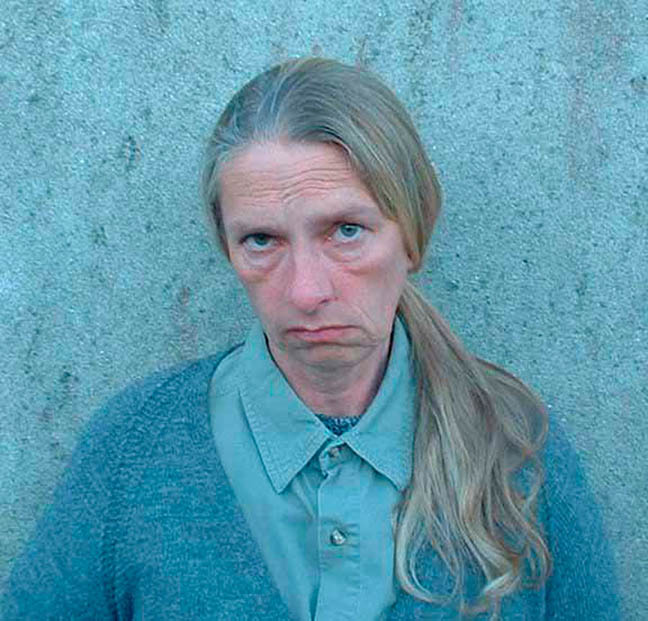
Carole was amazing to work with, she completely got it and in fact was making up some sort of religious chanting as we shot the images, she literally acted out the situation in a field in Cornwall watched by chilled out cows chewing the cud. You can see her performance on the contact sheet below:
Postscript..believe it or not the final frame for Caroles background was exposed in Brockley, London. I was opening my door to the postman one morning and noticed that there was a house on fire at the end of my street being tended to by the Fire Service..
The retoucher for the entire campaign was Mark Kendrick.
In 2004 we were featured in the Zeitgeist section of the Association of Photographers awards in the UK.

You can see some of the finished images in the Advertising section of my website here.
May 24th 2010 A baby in a bag
Jun 27th 2010
About Conor
Conor is a photographer and film maker based in London. His images can be viewed on his website on the PHOTOGRAPHY and FILM links above. This blog is a good place to see all sorts of personal work and general projects in progress.
Twitter /
conormasterson
Follow Me
Tags
- photographs (31)
- Photography (25)
- Documentary (25)
- personal projects (23)
- PhotoBlog (21)
- Music (19)
- HD Film (18)
- The Frames (15)
- fun in the community (15)
- we are loughborough junction (14)
- Glen Hansard (14)
- Street Photography (14)
- exhibition (13)
- photographs only (12)
- Film (12)
- london (12)
- Advertising (11)
- COMMISSION (11)
- working methods (11)
- PORTRAIT (11)
- community (10)
- Ireland (9)
- Fashion (7)
- archive 1989-2009 (6)
- Video (5)
- In The Deep Shade (4)
- The Swell Season (4)
- POLAROID (4)
- Loughborough Junction (4)
- Live Music (4)
- BLACK AND WHITE (4)
- FALLING SLOWLY (4)
- Fun Factory (4)
- Director (4)
- PORTRAITURE (4)
- Fred Karno (4)
- the clockwork studios (3)
- BEHIND THE SCENES (3)
- Brixton (3)
- Fantasy (3)
- Drama (3)
- PARIS (3)
- POETRY (3)
- Art (3)
- PERFORMANCE (3)
- CONOR MASTERSON (3)
- Book (3)
- The Frames In The Deep Shade (3)
- Inspiration (3)
- BTS (3)
Recent Comments
There is something in the pipeline and it will definitely include some rockin ..."
Archive
-
2018

-
January
-
2017

-
January
-
2016

-
December
-
2015

-
March
-
2014

-
December
-
August
-
July
-
January
-
2013

-
December
-
August
-
July
-
June
-
March
-
February
-
January
-
2012

-
December
-
October
-
September
-
August
-
June
-
April
-
March
-
February
-
January
-
2011

-
December
-
November
-
September
-
August
-
July
-
May
-
March
-
February
-
January
-
2010

-
December
-
October
-
September
-
July
-
June
-
May
-
April
-
March
-
February
-
January
-
2009

-
November
-
August
-
July
-
April
-
March
-
February
-
2008

-
December
